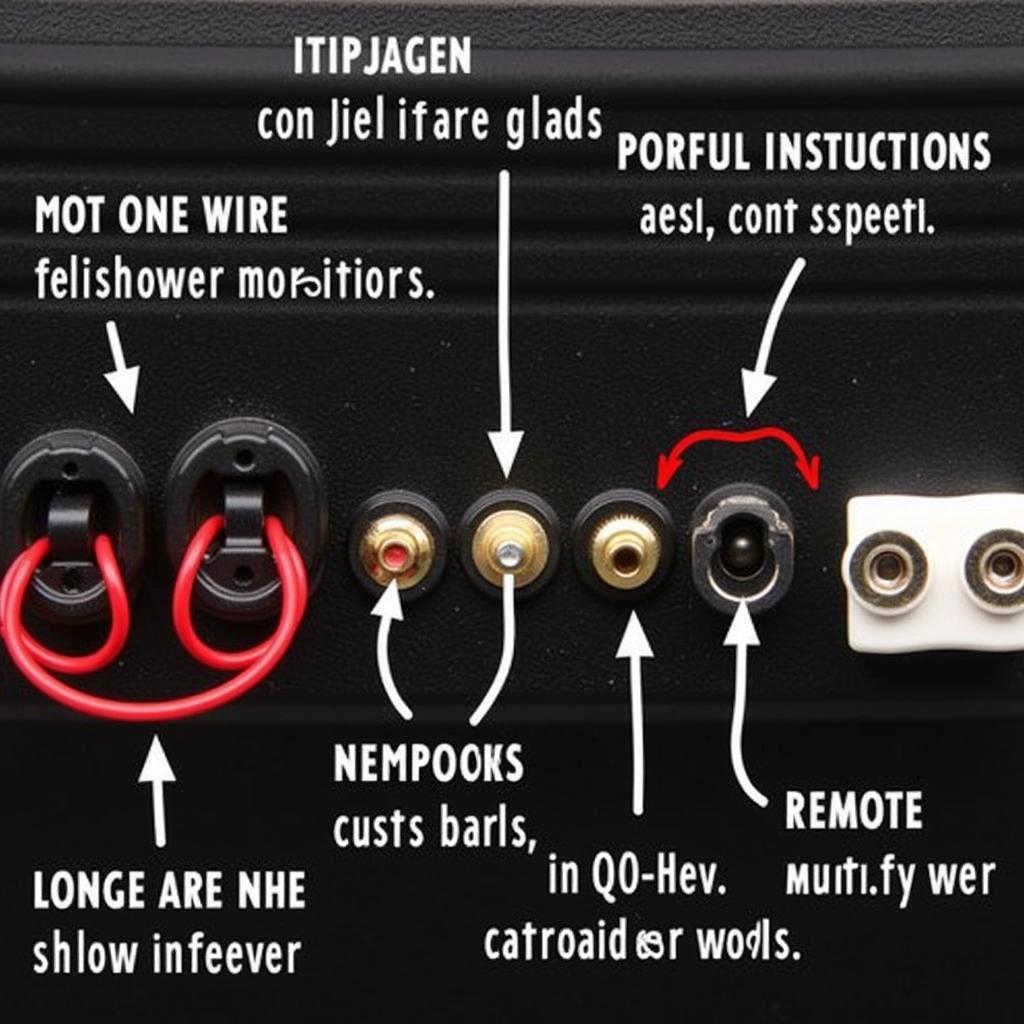If you’re seeing the dreaded check engine light on your Jeep Cherokee after a recent battery replacement, you’re not alone. This is a surprisingly common issue, and while it can be frustrating, it’s often easily resolved. This article will walk you through the most likely causes, how to diagnose the problem, and the steps you can take to fix it.
Many Jeep Cherokee owners find their check engine light illuminated after a simple battery replacement. This can be caused by several factors, ranging from simple electrical glitches to more complex system issues. Understanding why this happens is the first step to getting your Jeep back on the road.
Why Does My Check Engine Light Come On After a Battery Replacement?
The check engine light is your Jeep’s way of telling you something isn’t quite right. When you disconnect the battery, the vehicle’s computer (PCM, or Powertrain Control Module) loses power and its stored memory is cleared. This can sometimes cause temporary glitches in the system, triggering the check engine light. Additionally, the sudden power loss can sometimes reveal underlying issues that weren’t apparent before.
Common Causes of a Check Engine Light After Battery Replacement
-
Loose Gas Cap: A loose or improperly sealed gas cap is one of the most common culprits. After replacing the battery, double-check your gas cap to ensure it’s securely tightened.
-
Oxygen Sensor Issues: Oxygen sensors monitor the exhaust gases and help regulate the air/fuel mixture. Disconnecting the battery can sometimes affect their readings, triggering the check engine light.
-
Low Voltage: Even a slightly low voltage after a battery replacement can cause the PCM to malfunction.
-
Emissions System Components: Various components within the emissions system, such as the evaporative emissions system (EVAP), can be sensitive to voltage changes and trigger the light.
“A quick check with an OBD-II scanner can save you a lot of time and hassle,” advises John Miller, ASE Certified Master Technician. “It will pinpoint the specific trouble code, giving you a much better idea of where to start troubleshooting.”
How to Diagnose the Check Engine Light
The most effective way to diagnose a check engine light is to use an OBD-II scanner. These handheld devices plug into your vehicle’s diagnostic port and read the trouble codes stored in the PCM. This will give you a specific code that indicates the nature of the problem.
Steps to Diagnose and Fix the Issue:
-
Check the Gas Cap: Make sure it’s tightened securely.
-
Disconnect and Reconnect the Battery: Sometimes, simply disconnecting the battery again for a few minutes and then reconnecting it can resolve the issue.
-
Use an OBD-II Scanner: Read the trouble codes and research their meaning. This will help you pinpoint the problem area.
-
Inspect Related Components: Based on the trouble code, inspect the related components for any obvious issues like loose connections, damage, or corrosion.
-
Seek Professional Help: If you’re not comfortable working on your vehicle yourself, or if the problem persists, take your Jeep to a qualified mechanic.
checking for a parasitic draw can be helpful to ensure that the new battery isn’t being drained unexpectedly.
Preventing Future Check Engine Light Issues
While not all check engine light issues are preventable, there are a few steps you can take to minimize the risk:
-
Proper Battery Installation: Ensure the battery is installed correctly and the terminals are clean and tight.
-
Regular Maintenance: Keeping up with your Jeep’s scheduled maintenance can help prevent many potential problems.
“Regular battery maintenance, including checking for corrosion and ensuring proper connections, is key to preventing electrical gremlins,” says Sarah Johnson, an automotive electrical engineer.
remote car starter draining battery and other accessories can sometimes contribute to battery drain and trigger issues.
Conclusion
Seeing a check engine light on your Jeep Cherokee after replacing the battery can be concerning, but it’s often a straightforward fix. By following the steps outlined in this article and using an OBD-II scanner, you can quickly diagnose and resolve the issue. If the problem persists, seeking professional help is always the best course of action. Remember to regularly maintain your Jeep and ensure proper battery care to prevent future check engine light occurrences.
car battery draining while parked is another common issue that can sometimes be related to the check engine light.
FAQ
- Is it normal for the check engine light to come on after replacing the battery? While it’s not uncommon, it doesn’t always happen. It’s often a temporary glitch, but it can also indicate an underlying issue.
- Will the check engine light go off on its own? Sometimes it will, especially if it’s just a temporary glitch. However, if the light persists, it’s best to diagnose the problem.
- What does it cost to diagnose a check engine light? The cost can vary depending on the shop, but it’s often relatively inexpensive. You can also purchase your own OBD-II scanner.
- Can I drive my Jeep with the check engine light on? It depends on the underlying issue. If the light is flashing, it indicates a serious problem and you should not drive the vehicle.
- How often should I check my car battery? It’s a good idea to check your battery every few months, especially during extreme temperatures.
- How long does a car battery typically last? Car batteries typically last between three and five years.
- Can a bad battery cause other problems in my Jeep? Yes, a bad battery can lead to electrical issues and even damage other components.
2019 jeep cherokee battery issues can provide specific information for owners of this model year. replace battery in jeep key fob is also a useful resource for maintaining your Jeep’s keyless entry system.

